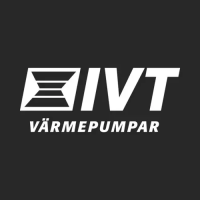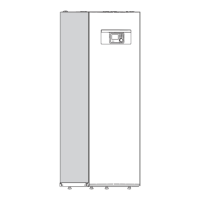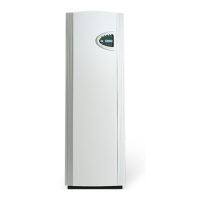Do you have a question about the IVT E7 and is the answer not in the manual?
Explains warning symbols, signal words, and additional symbols used in the document.
Provides essential safety instructions for installation, commissioning, service, and maintenance.
Covers general heat pump details, application area, type overview, transport, positioning, installation checks, CAN-BUS, and circuit board handling.
Describes heating circuits, control methods, clock settings, and operating modes for the heat pump.
Provides detailed physical dimensions and clearance requirements for C6-C11, E6-E11, and E14-E17 models.
Identifies and lists main heat pump components, details system solutions, and provides technical data tables.
Details installation of collector/heating systems, flushing, appliance siting, pipework, setup, and filling processes.
Guides on connecting the heat pump, internal/external wiring, soft starter, electric element switch, and circuit board diagrams.
Describes the control panel layout, buttons, status indicators, and basic operation.
Details how to access installer-specific menus using an access code, including compressor restart and sensor info.
Configures room temperature, heating circuits, heat curves, and sensor influences.
Details configuration options for hot water production, peak, mode, and time settings.
Manages timer functions for delays, operation times, and additional heat.
Covers settings related to external inputs for functions like compressor block and heating control.
Provides settings accessible only at the installer level, including anti-seizure and groundwater pump.
Manages user access levels and returning the system to factory default settings.
Details how to configure alarm indications, buzzers, logging, and history.
Describes the status lamp, alarm display, buzzer behavior, and acknowledgement procedures.
Covers viewing, deleting, and understanding alarm logs and historical data.
Outlines procedures for checking refrigerant circuit, system pressure, and operating temperatures.
Details recommended maintenance tasks, function checks, and the final commissioning protocol.
Explains warning symbols, signal words, and additional symbols used in the document.
Provides essential safety instructions for installation, commissioning, service, and maintenance.
Covers general heat pump details, application area, type overview, transport, positioning, installation checks, CAN-BUS, and circuit board handling.
Describes heating circuits, control methods, clock settings, and operating modes for the heat pump.
Provides detailed physical dimensions and clearance requirements for C6-C11, E6-E11, and E14-E17 models.
Identifies and lists main heat pump components, details system solutions, and provides technical data tables.
Details installation of collector/heating systems, flushing, appliance siting, pipework, setup, and filling processes.
Guides on connecting the heat pump, internal/external wiring, soft starter, electric element switch, and circuit board diagrams.
Describes the control panel layout, buttons, status indicators, and basic operation.
Details how to access installer-specific menus using an access code, including compressor restart and sensor info.
Configures room temperature, heating circuits, heat curves, and sensor influences.
Details configuration options for hot water production, peak, mode, and time settings.
Manages timer functions for delays, operation times, and additional heat.
Covers settings related to external inputs for functions like compressor block and heating control.
Provides settings accessible only at the installer level, including anti-seizure and groundwater pump.
Manages user access levels and returning the system to factory default settings.
Details how to configure alarm indications, buzzers, logging, and history.
Describes the status lamp, alarm display, buzzer behavior, and acknowledgement procedures.
Covers viewing, deleting, and understanding alarm logs and historical data.
Outlines procedures for checking refrigerant circuit, system pressure, and operating temperatures.
Details recommended maintenance tasks, function checks, and the final commissioning protocol.











